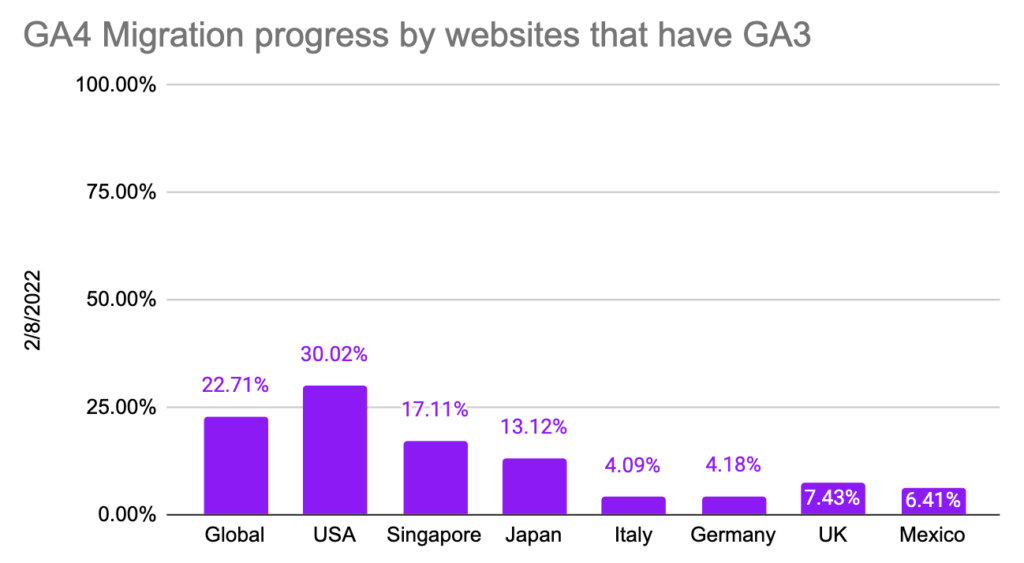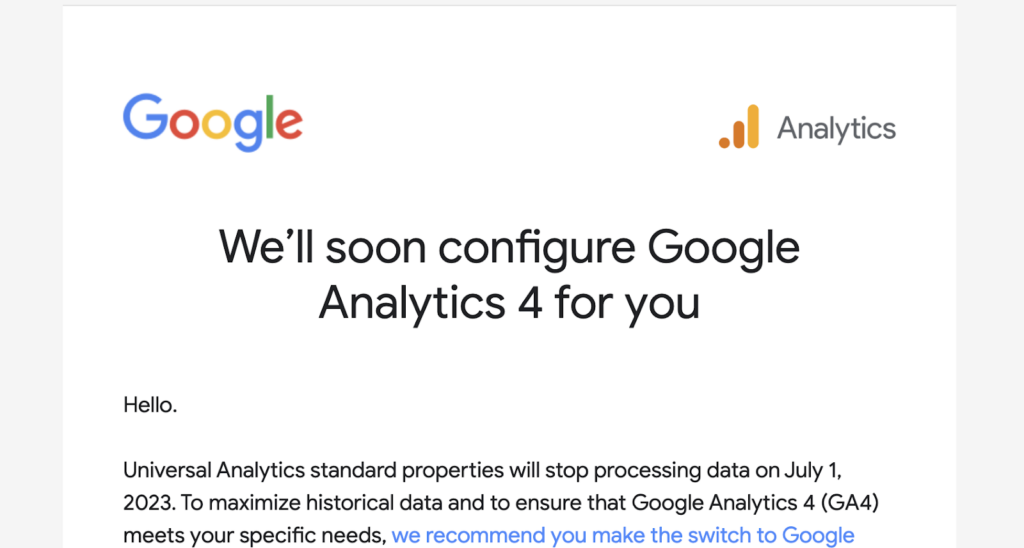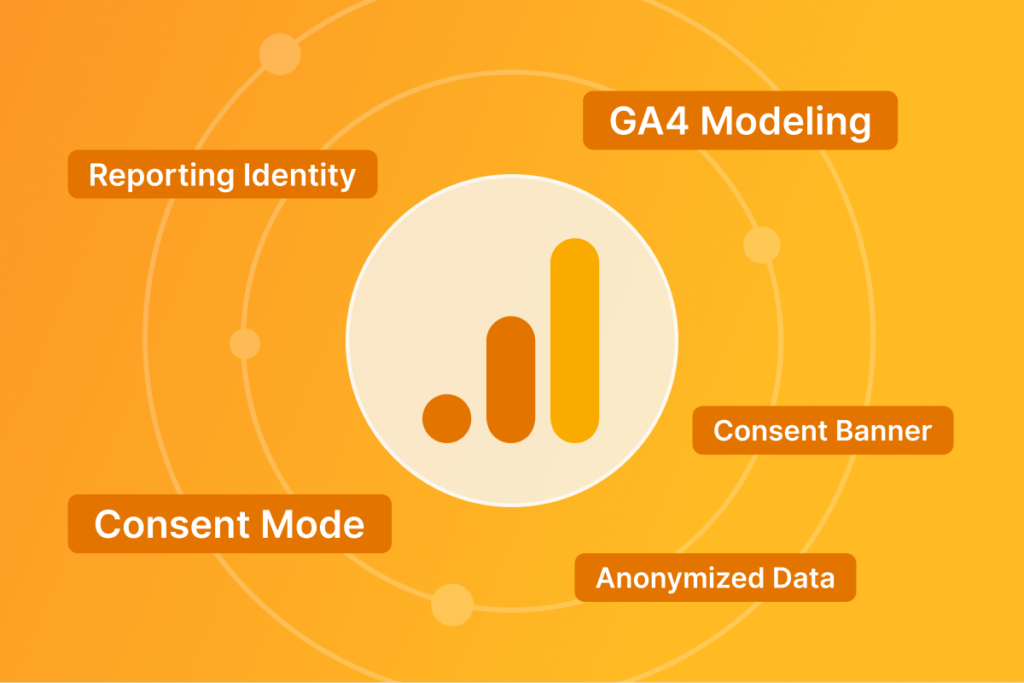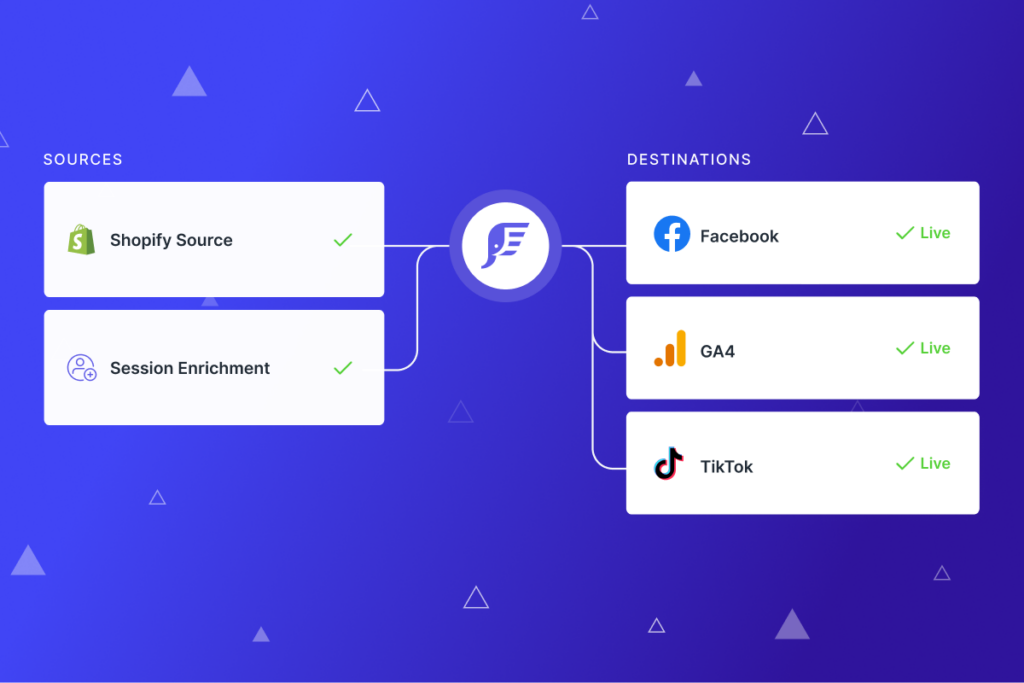Google Analytics 4 Migration: You Can Get Through it and Here’s How
GA4 was created to meet the changing needs of today’s digital landscape – it’s different, but there’s a lot to love about it. Here’s how to get through the GA4 migration, step by step.

Guest post by: Elevar technology partner Mia Umanos, CEO and Founder, Clickvoyant.
When the threat of the “Cookiepocalypse” emerged several years ago, marketers and advertisers were so anxious about losing their third-party data that most browser softwares rolled back the dates to deprecate third-party cookies (which are still passed through the majority of web browsers today).
When third-party cookies are deprecated, it means that advertisers will no longer be able to track customer behavior data across the digital marketing ecosystem. This is a great risk to the industry because it will limit marketers’ ability to collect and use that customer data to target and personalize ads. While that may be great for consumer privacy, it’s a disaster for a marketer who uses that data to effectively and cost-efficiently reach their buyers.
Given the market reaction to the potential loss of third-party data, I’m surprised at the tepid response to the loss of first-party data that the Google Analytics 4 (GA4) migration poses.
Google announced the deprecation of GA3 (aka Universal Analytics) in October 2020 – more than two years ago. Today, Google Analytics 4 (GA4) is deployed on a mere 20% of global companies that have migrated to the new platform.
Check out this chart below showing a sample of countries and their progress toward GA4 migration:

The lackluster response to the loss of first party data signals that the marketing industry as a whole has been ignoring the mid-funnel analytics that product, website, and conversion rate optimization managers are hungry for.
I don’t think these numbers are surprising to the marketers who use Google Analytics, despite the numerous benefits that GA4 has to offer. Let’s check out the reasons why many companies lag behind with GA3, and why others made the switch to GA4.
The Analytics Industry is Less Mature than Most People Assume It Is
GA4 was created to meet the changing needs of today’s digital landscape. Unlike GA3, which focused primarily on website traffic, GA4 offers a more comprehensive and flexible approach to web analytics, making even the term “web analytics” a misnomer. Here’s why:
- GA4 collects more data compared to GA3, and that data is more flexible.
- It’s built on a machine-learning foundation, which has the potential to create better insights than it could in the last decade. The early manifestations of this are for eCommerce merchants who will get purchase and churn probability and revenue predictions.
- It can encompass both mobile and web in one “data stream.” For companies that have both a mobile app and a website, not being able to research customer behavior across the two has been a significant pain point.
- Enhanced event tracking collects some basic user interactions or behavioral events that you couldn’t otherwise get without custom tags.
- These new features also make GA4 more powerful and user-friendly to the data analyst or data scientist, allowing them to be nimble with their analysis.
Google’s assumption is that marketers can leverage these features themselves. Their blindspot is the gap in analytics talent to help marketers realize the value of GA4. The reality on the ground is that marketers need time for creativity and strategy, and they don’t have time to go down the rabbit hole of data analysis, and likely don’t have the statistical chops. Dashboard-based decisions, devoid of any statistical research, are often no better than a random guess.
To use GA4 optimally, it needs someone in the driver’s seat who understands analytics and machine-learning. With one-third of enterprise analytics roles open at any given time, it’s unlikely that a person exists at most companies who’s expert in both Google Analytics and data analysis.
“I thought it was some kind of system upgrade.”
If I had a dollar for every time I heard this from businesses, I wouldn’t need another fundraise for Clickvoyant.
Many companies are still using GA3 and are unaware of the magnitude of the changes.
- They’re not aware they’ll lose year-over-year data.
- They’re not aware of the data architecture changes.
- They’re not aware that some of the metrics they currently rely on as KPIs will be gone.
Many companies will be blindsided by the reality that is coming with GA4.
Most people I’ve talked to all agree: Google did not do a good job of ringing the alarm on this. Last week, an email was sent by Google stating (and I summarize), “We’re just gonna do this for you.” But in my mind, they’re about a year too late. There is palpable panic out there from companies afraid of going dark on performance metrics because year-over-year data will be gone if they don’t transition to GA4 properly.

Not every company has a change management team.
There’s a lot of work that goes into the process of big changes in any company, small or large, and it’s not easy. The process of migrating can be complex and time-consuming, especially for companies that have a lot of data and custom configurations. There’s a risk of lost data and the entire orchestration of data mapping. Even the smallest of companies has to consider how the GA4 tracking code will contribute to a new taxonomy. This is a daunting task even for those who are familiar with Google Tag Manager (GTM)— so just imagine everyone else.
For those who aren’t yet familiar with the GA4 migration process, here’s a high level overview of the process:
- Mitigate Risks: Evaluate how everyone in the company uses Google Analytics. Dive deep into business critical use cases and start tagging from there.
- Improve User Adoption: Poor user adoption will slow your company down. Accept the truth: the change is going to be overwhelming, so developing tribal knowledge will be key. Start sharing outcomes on business-critical activities, and host and/or join GA4 task forces, learning committees, and social media groups dedicated to the subject.
- Enhance Business Outcomes: While I’m not a big fan of most dashboards (they tend to raise more questions than they answer), the dashboard is going to be a useful tool in discovering what GA4 data means.
- Build Resilience: Put in the time to befriend GA4—it will all pay off. I’ve asked my LinkedIn network why they think GA4 is slow on the uptake and I get answers like, “It sucks,” “I hate the UX,” “I switched to Matomo.” Suffice it to say, this is the wrong attitude. Embracing the technology with a positive mental attitude are critical to success. Asking why it’s different will lead to a better understanding of the power of GA4. In addition, no other analytics software is a magic bullet. Analytics is a skill, not a tool. Why pay for something inferior as an alternative to a free, enterprise-ready solution?
There is a light in the dark.
Despite the challenges, GA4 has a lot of advancements and changes to love.
- Because of the Machine Learning (ML) layer, there’s hope that GA insights might actually say something more than “increase your ad spend” as a recommended insight.
- The flexibility to collect data from numerous sources and see it all in one place can function as a type of ‘data warehouse’ for companies that wouldn’t normally be able to afford such a luxury.
- A comprehensive view of customers across multiple devices will offer businesses the opportunity for more customer empathy in their marketing and product designs.
- GA4 will deliver better micro-conversion tracking for all the things marketers do to guide consumers back to their product, downloads, webinars, and video views. We should be able to better correlate these customer journeys with an end goal, and marketing teams will be better informed. Ultimately, this micro-conversion tracking should help optimize ad spend and efforts.
While the migration process from GA3 to GA4 can be complex and time-consuming, there is no better solution for the money.
And hey, we just went through a global pandemic – we’ve got this.



Leave a Reply